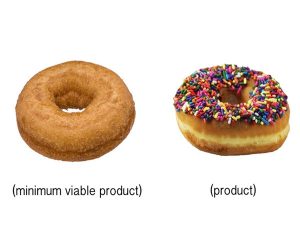content
Bespoke Software Development
April 9, 2025
6 min read
Introduction
Every great product starts with an idea. But not every idea turns into a successful product. That’s why smart entrepreneurs and companies use the Minimum Viable Product (MVP) approach. It helps validate ideas, minimize risks, and build something people actually want. So, how do you create an MVP and test your idea effectively? Let’s find out.
What is an MVP?
An MVP is the simplest version of your product that solves a core problem for your target audience. It includes only the essential features needed to test your concept in the market. Instead of spending months (or years) building a full-fledged product, you release a basic version and collect real feedback. This way, you avoid wasting time and resources on something that might not work.

Why Build an MVP?
Building an MVP has many benefits:
- Validates your idea – you can see if people are interested before investing heavily.
- Saves time and money – you only focus on what matters most.
- Gives early feedback – users tell you what works and what doesn’t.
- Attracts investors – a working MVP demonstrates potential, making it easier to get funding.
- Helps you change direction when needed – if users don’t respond well, you can adjust your decision before it’s too late.
Steps to Build an Effective MVP
1. Identify the Problem You Want to Solve
Every successful product solves a pain point. Start by asking yourself:
- What problem does my idea solve?
- Who are my target users?
- How are they currently coping with this problem?
If you’re solving a real problem that people are struggling with, you’re on the right track.
Helps you change direction when needed – if users don’t respond well, you can adjust your decision before it’s too late.
2. Define Your Core Value Proposition
You don’t need to build all the features at once. Focus on the core value your product offers. Ask yourself:
- What is the one key thing my product should do?
- How is it different from existing solutions?
Keep it simple. Your MVP should do one thing exceptionally well.
3. Research the Market
Before investing time in development, analyze the market. Check your competitors, study trends, and talk to potential customers. Tools like Google Trends, social media discussions, and industry reports can provide valuable information. If similar products already exist, determine what gaps you can fill.
4. Choose the Right MVP Type
There are several ways to create an MVP:
- Landing Page MVP – Create a website that describes your product and track visitor interest.
- Prototype MVP – A simple mockup of the design to test user reaction.
- Wizard of Oz MVP – Fake automation; you manually deliver a service that looks fully automated.
- Concierge MVP – Walk users through the process in person before automating.
- Single Feature MVP – Build and test just one core feature instead of a full product.
Choose the one that fits your business model and resources.
5. Develop a Simple and Functional MVP
Now it’s time to build. Work with a small team and focus only on the must-have features. Avoid overcomplicating things. The goal is not perfection, but functionality. A basic version with the necessary features is enough to test the waters.
6. Launch and Gather Feedback
Once your MVP is up and running, start collecting real user feedback. Use surveys, interviews, and analytics to understand how people interact with your product. Keep an open mind and listen to your users. Sometimes their needs may differ from your expectations.
7. Analyze Results and Iterate
Data is your best friend. Look at:
- How many people have signed up or used your product?
- What kind of feedback are you getting?
- Are users experiencing common problems?
Use these insights to improve and refine your MVP. If users like it, build on it. If not, change your approach or take it in a new direction.

Testing Your MVP: What Works Best?
Testing is just as important as building. Here are some effective ways to test your MVP:
- A/B testing. Launching different versions of a feature and seeing which one works best.
- User interviews. Talk to early adopters and ask them about their experience.
- Surveys and feedback forms. Quickly gather information from a wider audience.
- Engagement metrics. Track user activity, retention rates, and feature usage.
- Pre-orders and crowdfunding. If people are willing to pay before the full product is released, you have a solid test.
Common Mistakes to Avoid
While building an MVP is fun, many fall into these traps:
- Building too many features – stick to the bare minimum and focus on the core.
- Ignoring user feedback – the whole point of an MVP is to learn from users.
- Not marketing the MVP – even the best product fails without awareness.
- Choosing the wrong audience – test with real target users, not just friends and family.

Conclusion
Building an MVP is one of the smartest ways to test your idea before going all in. It saves time, reduces risk, and ensures you’re building something valuable. Start small, launch quickly, and learn from real users. By following this approach, you’re setting yourself up for long-term success.
If you have any questions or an idea for a software development project, contact us via sales@instandart.com or fill out the form on the main page of the site to discuss. We are always ready to help!
